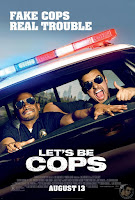Media Terminology
Media Terminology
Media texts
Any product that is being discussed is a media text and it is any form of media rather than written pieces (such as film and advertisements)
Media Studies Tools
Language
Institution
Audience
Representation
Language – Codes and Conventions
Media texts use the same rules dependent on what platforms they use.
For example, film and TV follow the same rules as visual media, they all use shot types, camera angles and movement, mise-en-scene, editing and sound.
The codes and conventions make it easier to know what media is being presented.
Media Institutions
Institutions are who make media texts; these are things such as big companies and conglomerate companies or small independent companies (e.g. conde nast, studiocanal, bbc, warner bros etc.)
Media Audiences
People who listen, watch or use media texts and they are grouped together by age, gender income and interests. Institutions work to make their media texts to appeal to the right audience.
Media representation
 The way real life is portrayed in the media is known as representation. Groups of people based on a certain age, gender, sexual orientation, social class or race are often shown in a certain light. This then makes people begin to believe that all people who fit in that group are like that- this is called stereotyping. Stereotyping is extremely problematic.
The way real life is portrayed in the media is known as representation. Groups of people based on a certain age, gender, sexual orientation, social class or race are often shown in a certain light. This then makes people begin to believe that all people who fit in that group are like that- this is called stereotyping. Stereotyping is extremely problematic.
Media genre
Media is separated into various genre types (genre comes from the French word, meaning ‘type’). All media will fit into at least one type of genre (e.g. the horror genre or the comedy genre).
 A genre can be recognised by certain distinguishable features associated with the genre such as; style, setting, characters, props and colours and lighting.
A genre can be recognised by certain distinguishable features associated with the genre such as; style, setting, characters, props and colours and lighting.
Sub and hybrid genres
Genre can be more complex that one type at once.
A sub genre is a sub category in a particular genre (such as zombie movies within the horror genre).
A hybrid genre is two or more genres in the same text, such as a rom-com.
Narrative
It is important to tell the difference between the story and the narrative. The story is a sequence of events pieced together to show the plot. A narrative is the way those events are placed together be shown to an audience.
Linear narrative
The narrative follows a straight line moving in a chronological order for the story.
Non-linear narrative
A non-linear narrative is how a film uses different techniques to tell a story out of order to crate a greater effect. Some of these include; flashbacks, out of sequence, dream sequences.
What a narrative needs
Narrative is delivered to the audience by expectation, suspense, tension and closure. The audience is led to expect certain things to happen throughout the story which lead to tension and excitement.
Typography
In Media we call the type of font used in typography.
Typography
In Media we call the type of font used in typography.

Comments
Post a Comment